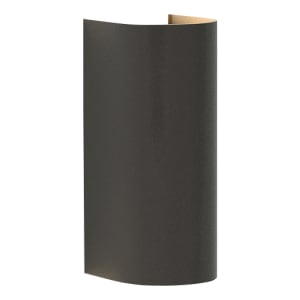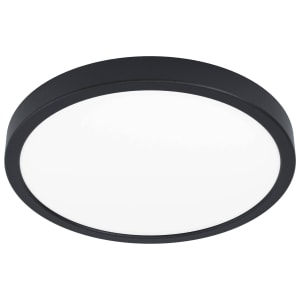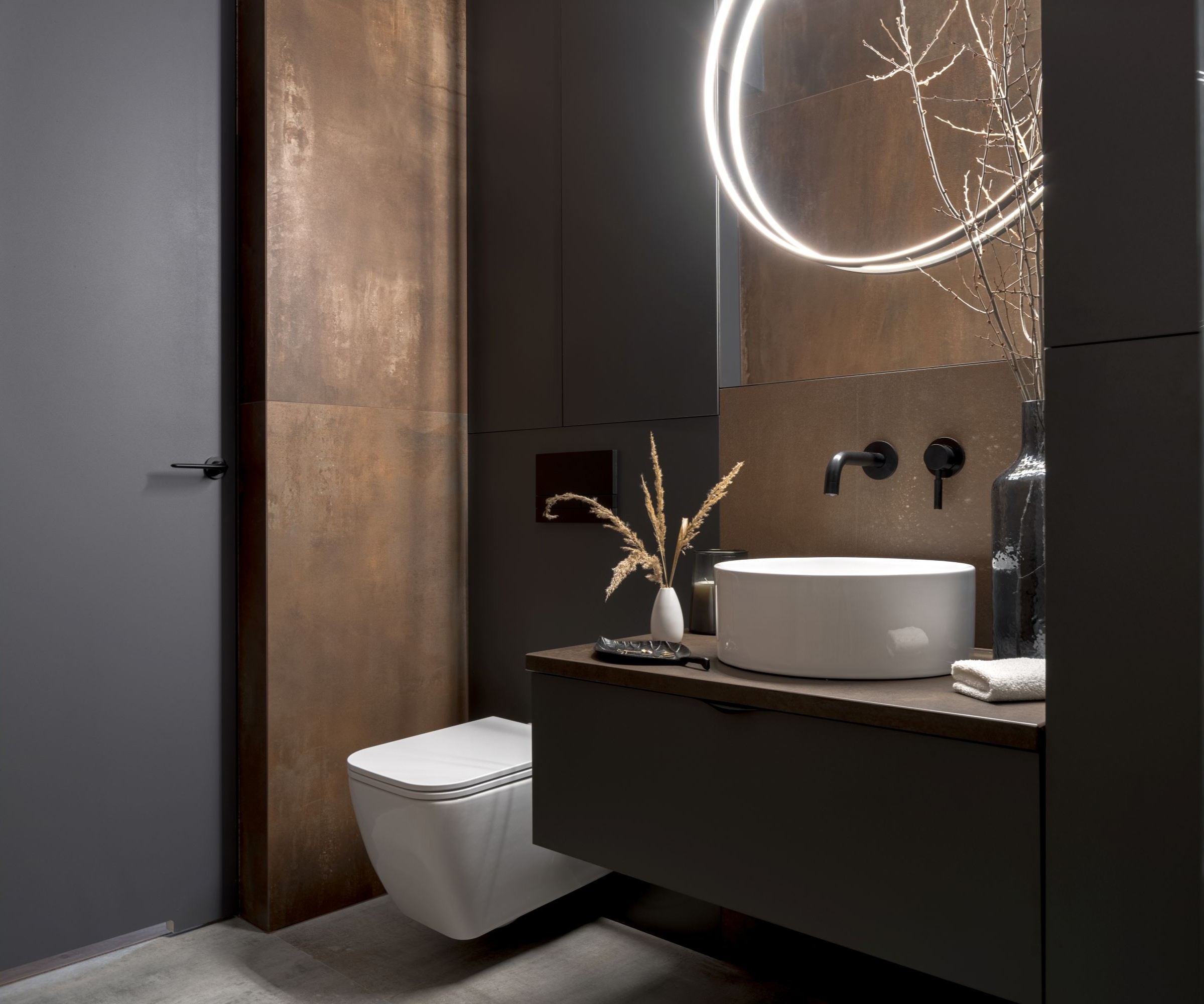Changing your bathroom lights? These are the bathroom lighting regulations to know before you start
Our expert talks through all the lighting regulations for bathrooms to make sure your project is not only compliant – but also safe

When you think about bathroom lighting, your first thought might be about how a fitting looks. A stylish pendant over the bath or recessed spotlights in the ceiling can be a standout feature and make a huge difference to the look and feel of a room.
But, looks are only half the story. In a space where water, steam and electricity are in close quarters, safety is critically important. That’s why bathroom lighting is more heavily regulated than lighting in any other part of the home.
Getting it right isn’t just about ticking the compliance box – it’s about protecting the people who use the space. Misjudging the level of protection a fitting needs, or skipping essential safety devices, can result in an installation that’s unsafe, not insurable, and in breach of building regulations. Understanding how the rules apply is therefore essential no matter if you’re planning a new bathroom, or simply replacing a light fitting.
Key regulations for bathroom lighting
Bathroom lighting is governed by Part P of the Building Regulations, which covers electrical safety in dwellings. It requires that any electrical work in a bathroom is carried out by a competent, qualified electrician. Approved document P sets out the general requirements such as IP ratings and zones with specific standards defined by BS EN60529 and the IET Wiring Regulations (BS 7671).
Ensuring compliance with IP Ratings (Ingress Protection)
A core part of bathroom lighting regulations is something called an IP rating. IP stands for Ingress Protection, and the ratings are defined under British Standard. The IP code indicates how well the fitting is protected against solid particles such as dust, and the level of protection against water and moisture. The higher the numbers, the greater the protection.
For example, a light with an IP20 rating offers virtually no protection against water, whereas an IP67 fitting is completely dust-tight and can withstand immersion in water for a limited time.
In bathrooms, even if a fitting isn’t at risk of being immersed, steam and splashes can get into electrical components, creating a real risk of electrocution. Protection from water ingress is therefore really important when it comes bathrooms and bathroom lights must be protected from splashes and steam to prevent faults and electrocution.
Bring your dream home to life with expert advice, how to guides and design inspiration. Sign up for our newsletter and get two free tickets to a Homebuilding & Renovating Show near you.
Shop for bathroom lighting products

Tool-less and quick to install due to the 4 way push fit screwless terminal block. The LED SMD module produces 500 lumens of warm white light from the anti-glare 60° lens. Slim profile with a matt white finish.

This modern black up and down light provides a soft, natural LED output. Built from durable aluminium and IP44 rated, it's ready for quick and easy bathroom installation.

The surface-mounted LED ceiling light from Eglo is a surface-mounted light with a minimalist design in black steel. The product has a white plastic diffuser and integrated LED components which produce a warm white light when illuminated.
Why zoning is used for lighting regulation
To make sense of which IP rating is needed, bathrooms are divided into bathroom zones. These zones reflect how close a light fitting is to water and, therefore, how much protection it needs.
- Zone 0 is in the bath or shower itself. This is the highest-risk area as light fittings are in direct contact with water. Light in zone 0 must therefore be completely waterproof and rated as IP67 or higher. In addition, the voltage must be kept low at 12 volts for maximum safety.
- Zone 1 covers the space directly above the bath or shower, up to 2.25 metres from the floor and in rooms under 3.0m high. Here, lights are considered to be regularly exposed to splashes so the minimum requirement is IP44 although IP65 is usually recommend, for extra protection.
- Zone 2 extends 0.6 metres beyond Zone 1 and also includes the area around sinks again where splashes are common. Here the minimum rating is IP44.
- Zone 3 refers to everything outside of these areas, which is sometimes referred to as Zone 3. Technically, there’s no legal requirement for an IP rating here, and in theory you could use a standard light with no water protection. In practice, it’s sensible to go for at least IP20 or higher to protect against condensation.

Additional safety requirements for bathroom lighting
The regulations cover more than just the types of light fittings, as the circuits that power bathroom lighting are also subject to safety requirements.
All bathroom lighting circuits must be protected by a Residual Current Device (RCD), which monitors the flow of electricity and cuts it off instantly if a fault is detected. Any problems may result in a fuse box that keeps tripping, for instance. The RCD must be 30mA to prevent electric shock.
Furthermore, light switches for bathroom lighting cannot usually be placed inside the bathroom unless they are the ceiling-mounted pull-cord type. Standard wall switches present a serious risk of electric shock in a wet, humid environment, and even touching a damp switch plate could result in electrocution if there’s a fault.
To eliminate that risk, the regulations require switches to be positioned outside the bathroom door with the exception of a ceiling pull-cord switch, which can be used safely with a cord. For modern bathrooms, sensor controls are an acceptable alternative.
Under Part P of the Building Regulations, new installation, or even significant alterations, must be carried out by a qualified electrician. When it comes to electrics, bathroom can be extremely dangerous so DIY installations and alterations are not allowed. Non-compliant work can also invalidate home insurance.
FAQs
Do I need to use a qualified electrician for a bathroom?
First and foremost, best practice is to always consult a qualified electrician when working on electrical installation in bathrooms. They’ll know the zones, will apply the right IP ratings, and ensure the circuit is properly protected by an RCD.
Do I need special fittings for a bathroom?
It’s also good practice for light fittings in bathrooms to display their IP rating. This enables the fittings to be checked as suitable for the zone they’re fitted in. It's worth remembering that even if a light looks perfect for a particular spot, if it isn’t rated for that environment, it’s a non-starter.
Once installed, lights shouldn’t be regularly checked as steam and heat can break down seals over time. Fittings that show signs of deterioration should be replaced.
What types of lighting can I use?
When choosing your bathroom lighting ideas, there are plenty of options available to you. Ceiling lights come in a wide variety, from flush fittings that work well in compact bathrooms to chandeliers and pendants that add drama in rooms with higher ceilings. While it’s tempting to make a statement, each fitting must sit in the right zone and have the correct IP rating.
Bathrooms are very personal spaces and the type of lighting can have a significant impact. Recessed spotlights, or downlights, are a favourite for modern bathrooms. They sit flush in the ceiling to create a sleek, uncluttered look. If the bathroom ceiling is insulated, fittings must be of a type to avoid overheating – LED lights that emit little heat are therefore popular. If the ceiling sits directly under the roof, cutting holes in the fabric of the ceiling can be a problem.
To avoid heat loss, it’s often easier to opt for airtight fittings. Wall lights and spot lights are great for task lighting, particularly around mirrors. Positioning them on either side of a mirror provides balanced illumination without the harsh shadows that a single overhead light can create.
Where should I put my bathroom lighting?
Planning your bathroom lighting starts by carefully considering the space to be lit. Ask questions like where does natural light come from and how it change throughout the day? Look for areas prone to shadows, such as corners or under cabinets where a fitting would help.
When working through a lighting design, there are three forms of lighting to consider. Ambient lighting such as down lights or pendants provide the overall brightness for a room. Task lighting provides focused illumination where its needed the most such as mirror or vanity lights. Accent lighting, such as LED strips can be tucked into recesses or used to draw out features and add depth. The best lighting design for bathrooms use all three of these to create a space that feels both functional and inviting.
What colour lighting can I have in a bathroom?
The colour of the light and lighting temperature is also important. The heat given off bulbs is measured in Kelvins (K), and warmer bulbs (around 2700K) create a cosy feel. Cooler bulbs (4000K and above) are closer to daylight and work well where task lighting is needed. If your bathroom gets a lot of natural light, choose bulbs that complement the daylight and make everything feel more cohesive.
In terms of brightness, a rough guide is to aim for around 150 lumens per square metre. For task lighting around say a mirror, the target should be between 300 and 400 lumens. For accent lighting, 100 to 200 lumens is usually enough to add atmosphere without overwhelming the space, but just make sure the control equipment and transforms can be hidden away.
Bathroom lighting regulations may seem a bit of a pain but they’re really important and essential for one simple principle: keeping people safe.
By understanding the rules such as IP ratings and circuit protection, and knowing the bathroom zones, you can create a bathroom lighting design that’s stylish, practical and safe to use. The key is to find the right blend of safety, compliance, and creativity.
For more advice, follow our expert guide to planning bathroom lighting, and make sure you avoid these bathroom lighting mistakes if you don't want to end up with a room that's too bright, too dark or simply impractical.
Mark Stevenson has worked as a construction professional for over 30 years and following an extensive career in housebuilding. He is currently chief operating officer for Custom Build Homes and chair of the National Custom and Self Build Association. He previously worked as managing director for Potton, helping self builders build their own homes.
Whilst Mark describes himself as a ‘professional builder’ as a result of his career in housebuilding and timber building system manufacturing, he has specialist knowledge of timber construction and extensive expertise in finding land and project management.
He regularly shares his knowledge at Homebuilding & Renovating Shows and and coaches self builders about how to build their own homes. Aside from Mark’s professional career, his skills also extend to practical building knowledge as a skilled joiner, hands-on renovator and serial self-builder of his own development projects.
He is also Vice Chair of industry body, the Structural Timber Association.

